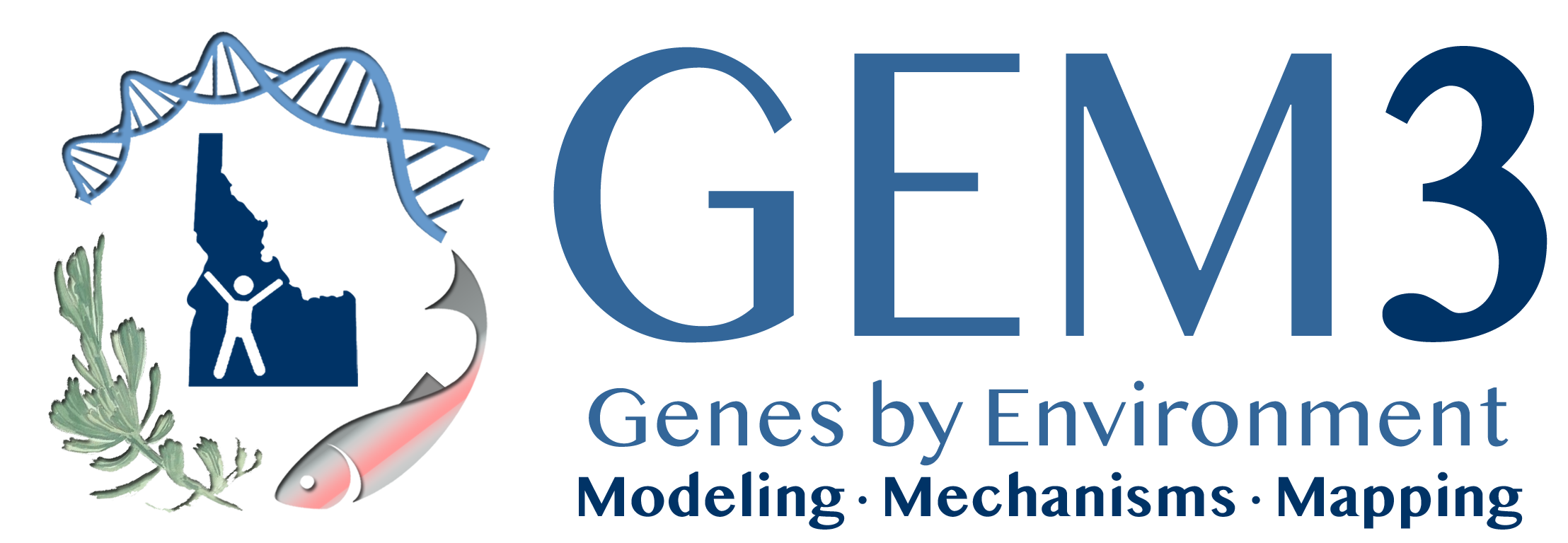Idaho's landscapes span a range of environmental gradients and encompass divergent social-ecological contexts, from designated wilderness to expanding urban areas. These "natural laboratories" enable the systematic discovery of how differing environments influence genomic variation and phenomic trait expression.
Research objectives are divided into 3 areas:
Modeling, Mechanisms, and Mapping
(click the links below to learn more)
![]()
Modeling
Develop, validate, and test integrative models that predict adaptive capacity of populations across space and time.
Leads: Barrie Robison (Lead, UI) and Trevor Caughlin (Co-lead, BSU)
The intent of modeling is to determine mechanisms underlying adaptive capacity and population vulnerability, and reliably forecast population trends over space and time.
The modeling team will build statistical models to explain distribution and demography of the study organisms and will simulate adaptive capacity and population densities using agent-based models (ABMs). These ABMs integrate ecological, evolutionary, and social data/processes using an iterative approach. ABMs infer relationships based on mechanisms research and create predictions of species traits and demographics through modeling. These predictions are then compared to empirical data through mapping to discover key processes.
This research will contribute to state and federal management of wildlife, fish, and plant populations, and provide key insight into developing process-oriented models for ecological forecasting that could be applied to many systems.
![]()
Mechanisms
Use common garden experiments to identify mechanisms in organisms that translate to adaptive capacity of populations.
Leads: Chris Caudill (Lead; Trout, UI) and Keith Reinhardt (Lead; Sagebrush, ISU)
Mechanisms research aims to assess relative contributions of genetic diversity and phenotypic plasticity in organisms to predict the adaptive response of populations to environmental change.
Data generated from common gardens will be used to compare responses of organisms that differ in genotypes or life history traits to environmental change to evaluate how abiotic variation across the landscape leads to deviations in modeled outcomes. The team will focus on selected populations of redband trout and sagebrush that are monitored yearly by partner agencies and for which historical data on population demographics are available. Populations from core and marginal environments will be prioritized, as well as those that deviate from modeled demographics.
This research will contribute to key insights into the adaptive capacity of species in the face of a changing environment, which has far-reaching consequences for wildlife, fish, and plant populations throughout the globe.
![]()
Mapping
Map genotypic expression as a function of environment in populations across Idaho to inform management decisions.
Leads: Donna Delparte (Lead, ISU) and Morey Burnham (Co-Lead, ISU)
Mapping strives to develop a spatiotemporal understanding of the links between genomic diversity, phenotypic plasticity, and social ecological systems change.
Investigators will use field data to visualize, validate, and propose novel hypotheses related to the links among genotypes, environment, and phenotypic traits. The team will couple advances in genomics, remote sensing, and computational technology with social science research to determine where and how complex social ecological system factors and human decisions govern these patterns. Model predictions and mechanistic drivers will be compared to observed populations and distribution patterns across the landscape to identify deviations from those predictions.
This research will contribute to our understanding of how complex social ecological system factors and human decisions govern spatiotemporal patterns of species distribution.

